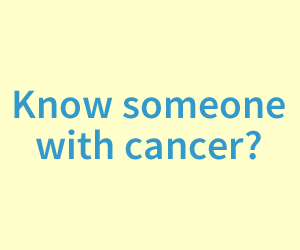Low-dose Naltrexone (LDN)
At regular strength, this drug is used to help drug addicts recover by blocking their ability to get a high. At low doses, it has received significant attention as miracle therapy for Multiple Sclerosis (go search for "low dose naltrexone" on youtube and you'll see what I mean). It also addresses other immune disorders such as Crohn's and Lupus. Finally, it has also gotten press on it's ability to boost the cancer patient's immune systems. It's cheap and apparently has little to zero toxicity and side-effects.
How does it work?
"The brief blockade of opioid receptors between 2 a.m. and 4 a.m. that is caused by taking LDN at bedtime each night is believed to produce a prolonged up-regulation of vital elements of the immune system by causing an increase in endorphin and enkephalin production" (source: http://www.lowdosenaltrexone.org/)
Other links:
- http://www.lowdosenaltrexone.org/
- http://www.palmbeachpost.com/health/content/accent/epaper/2008/02/07/a5e_bone_col_0207.html
- http://www.mbschachter.com/protocol_for_low.htm
Note that this author indicates LDN should be taken for life to avoid cancer recurrence. This has serious implications and should be considered before starting on LDN. - The Long-term Survival of a Patient With Pancreatic Cancer With Metastases to the Liver After Treatment With the Intravenous
 -Lipoic Acid/Low-Dose Naltrexone Protocol
-Lipoic Acid/Low-Dose Naltrexone Protocol
The authors describe the long-term survival of a patient with pancreatic cancer without any toxic adverse effects. The treatment regimen includes the intravenous -lipoic acid and low-dose naltrexone (ALA-N) protocol and a healthy lifestyle program. The patient was told by a reputable university oncology center in October 2002 that there was little hope for his survival. Today, January 2006, however, he is back at work, free from symptoms, and withoutappreciable progression of his malignancy. The integrative protocol described in this article may have the possibility of extending the life of a patient who would be customarily considered to be terminal. The authors believe that life scientists will one day develop a cure for metastatic pancreatic cancer, perhaps via gene therapy or another biological platform. But until suchprotocols come to market, the ALA-N protocol should be studied and considered, given its lack of toxicity at levels reported. Several other patients are on this treatment protocol and appearto be doing well at this time.
-lipoic acid and low-dose naltrexone (ALA-N) protocol and a healthy lifestyle program. The patient was told by a reputable university oncology center in October 2002 that there was little hope for his survival. Today, January 2006, however, he is back at work, free from symptoms, and withoutappreciable progression of his malignancy. The integrative protocol described in this article may have the possibility of extending the life of a patient who would be customarily considered to be terminal. The authors believe that life scientists will one day develop a cure for metastatic pancreatic cancer, perhaps via gene therapy or another biological platform. But until suchprotocols come to market, the ALA-N protocol should be studied and considered, given its lack of toxicity at levels reported. Several other patients are on this treatment protocol and appearto be doing well at this time.
Case Study (Stage IV renal cancer)
- Patient Claudia (http://www.youtube.com/watch?v=XbYC0R5uKzE)
-
Initial protocol
-
wrote prescription for 100mg capsules
- 1 capsule in 100ml of water
- keep in glass jar in refrigerator
- 1 tsp every night ($2/month)
-
Low sugar diet
- 2g Fish Oils 2x/day
- organic beef + chicken
-
Fluids
- Restricted to water and green tea
-
Vitamin C (oral)
- to bowel tolerance
-
Graviola
- herb with anticancer
-
Pancreatic enzymes
- Wobenzyme
-
wrote prescription for 100mg capsules
-
Follow up scan 1
- 8 weeks into program
- follow up CATscan
- right nodule larger
- left nodule smaller
- abdominal CTs hadn't changed
-
decided to add: HDIVC - 5 days / week for 2 weeks (10 sessions)
- started 25g
- Gradually increased to 75g
-
Also added low dose IPT
- Interferon alpha
- IL2 - 1/week for 8 weeks
-
Follow up scan 2
- Right node - barely persceptible
- Left node - not seen
- Others still remained
-
Decided to add following treatments
- 4 more HDIVC
- 8 more IPT
- Continued LDN
-
Follow up scan 3
- Most tumors gone. Remaining tumors "might be benign cysts"
-
Following year
- NED of metastatic disease
- Continues to take 1 capsule of 100mg dissolved in 3oz water, take 1 tsp each time for $2/month
- HDIVC 1x / month



